Utility and Mechanism of the 100 KDA Centrifugal Filter
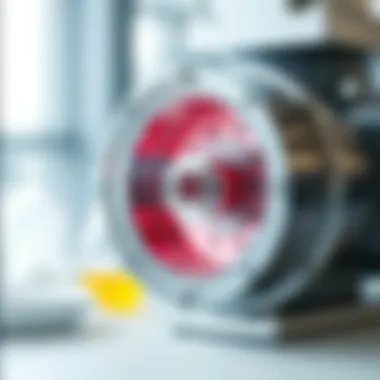
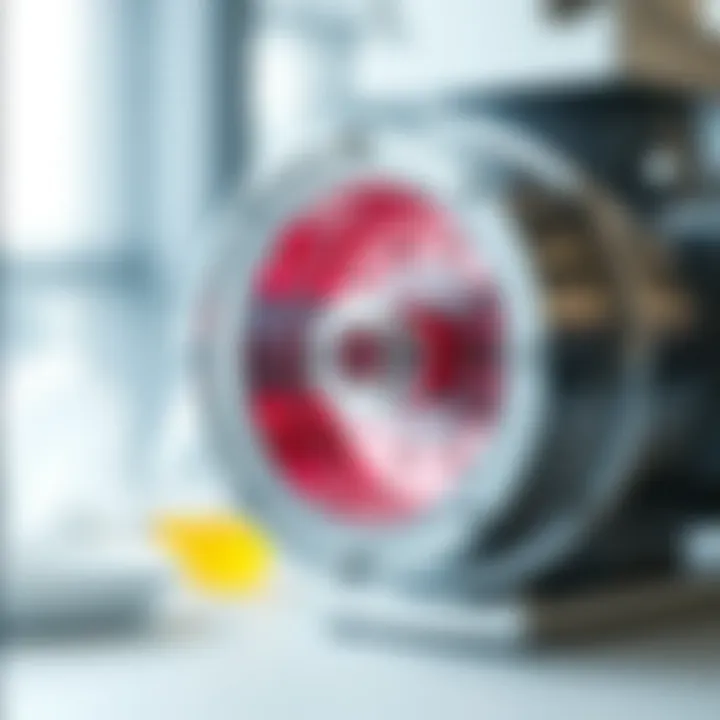
Overview of Research Topic
Brief Background and Context
The 100 KDA centrifugal filter serves as a pivotal tool in the realm of separation techniques, utilized extensively in various scientific and industrial applications. Specifically designed to operate on the principle of centrifugal force, this filtration device efficiently segregates molecules based on size. Typically, the filter operates optimally to retain larger molecules while allowing smaller ones to pass through. This capability makes the 100 KDA filter invaluable in applications ranging from protein purification in laboratories to wastewater treatment in industrial settings.
Centrifugal filters consist of membranes that possess specific molecular weight cut-offs, allowing for targeted separations. The choice of a 100 kDa membrane, marked by its unique ability to facilitate the purification of proteins and nucleic acids, pushes the envelope of research and industry standards. Understanding its operation lays the groundwork for advanced applications across various fields, including biotechnology and pharmaceuticals.
Importance in Current Scientific Landscape
In an era where precision and efficiency dictate the success of scientific endeavors, the relevance of the 100 KDA centrifugal filter cannot be overstated. The ongoing innovations in research methodologies require tools that can provide high levels of purity and reliability. With the increasing demand for quality in clinical research, the use of such filters has proliferated. This device is not merely a filtration tool; it is integral to ensuring the integrity of biological research.
Moreover, as environmental concerns become more pressing, the role of centrifugal filters in processes such as water purification is drawing more attention. Their efficiency in removing contaminants and retaining pivotal bioproducts has opened new avenues for sustainable practices in industry.
"Understanding the mechanisms behind separation technologies like the 100 KDA centrifugal filter can equip scientists and engineers with the tools needed to drive innovation in both clinical and industrial applications."
Methodology
Research Design and Approach
This article adopts a comprehensive review design, aiming to amalgamate various insights and findings relating to the 100 KDA centrifugal filter. The approach includes a thorough literature survey and an analysis of existing case studies that showcase the filter's diverse applications. By focusing on both foundational principles and emergent trends, the article endeavors to present a holistic view of the topic.
Data Collection Techniques
Data collection for this exploration involves the synthesis of peer-reviewed journals, articles from reputable scientific databases, and case studies from industrial applications. Relevant data from resources such as
Wikipedia,
Britannica, and various scholarly articles from domains like
*edu and *gov provide an evidence-based framework for discussion.
By scrutinizing these varied sources, the narrative aims to reveal not just the operational mechanics but also the practical implications this technology has within modern scientific inquiry.
Prelude to Centrifugal Filtration
Centrifugal filtration serves as a cornerstone technique across various scientific fields, especially when it comes to separating macromolecules from solutions. This method is not just a lab procedure; it underscores a broad spectrum of applications, ranging from biological research to industrial processes. In this context, understanding centrifugal filtration is critical for anyone aiming to grasp advanced methodologies in biochemistry or molecular biology.
Definition and Concept
Centrifugal filtration is, at its core, a separation process that employs the principle of centrifugal force. When mixtures are spun at high speeds, denser particles move outward towards the filter membrane, while less dense components remain in the filtrate. This decision-making property of matter results in effective separation of biomolecules, either for purification or concentration. The 100 KDA centrifugal filter, specific to its molecular weight cut-off measurement, is adept at removing substances larger than its threshold, allowing researchers to focus on the relevant molecules of a certain size range. This filtering capacity underpins many experimental setups by ensuring only the desired components proceed downstream.
Historical Developments
The journey of centrifugal filtration is quite fascinating, evolving significantly over time. This technology traces its roots back to early applications in microbiology where simple centrifuge systems were adapted to separate cells from culture media. As the fields of molecular biology and biochemistry matured, so too did the complexity of filtration. The advent of more sophisticated centrifuges and membrane technologies in the mid-20th century allowed for greater precision and efficiency. The 100 KDA centrifugal filter emerged as a specialized tool in the 1980s and 1990s, tailored for the burgeoning needs of laboratories focused on protein purification and sample concentration.
Today, users stand on the shoulders of these historical innovations, benefiting from a much more refined and efficient technology that simplifies prior processes and enhances reliability in research methodologies.
Understanding Molecular Weight Cut-Off
The concept of Molecular Weight Cut-Off (MWCO) is pivotal to understanding the design and use of centrifugal filters, specifically the 100 KDA centrifugal filter we are exploring here. The MWCO is essentially a threshold that dictates the size of molecules that can pass through a filter while retaining larger molecules in the filtration process. In the context of the 100 KDA centrifugal filter, this cut-off means that molecules larger than 100 kilodaltons (KDA) will be retained, effectively separating them from smaller solutes and contaminants.
Significance of the KDA Cut-Off
Understanding the significance of the 100 KDA cut-off is foundational for optimizing experimental results. This specific cut-off is particularly vital in biochemical applications where the retention of larger biomolecules, such as proteins and nucleic acids, is crucial while allowing smaller molecules, ions, or solvents to pass through. With this capability in mind, researchers can focus on key molecules of interest without interference from smaller constituents.
In several scenarios, this filtration method is employed to concentrate samples. For instance, researchers might deal with protein solutions that need further analysis or purification, and the 100 KDA filter enables an efficient way to isolate the target proteins while discarding smaller contaminants. The implications extend beyond merely retaining certain molecules—the cut-off influences factors like yield, purity, and even the downstream analyses, as a correct understanding of MWCO can prevent costly mistakes in experimental design or outcomes.
"Choosing the right cut-off is not just about filtration, it's about ensuring that your results are not only valid but also reliable and reproducible."
Implications for Sample Preparation
When getting into the nitty-gritty of sample preparation, the implications of the 100 KDA cut-off become evident. Proper sample preparation is essential in various scientific disciplines, especially in biochemistry and molecular biology. Efficient use of the 100 KDA centrifugal filter can significantly streamline the prep process. For example:
- Removal of Small Contaminants: Using the filter, researchers can remove low molecular weight contaminants from samples before performing further assays. This enhances the accuracy of analytical techniques like mass spectrometry or chromatographic separations.
- Concentration: By selecting the 100 KDA filter for concentrating protein samples, researchers have a reliable means of achieving higher sensitivity in downstream experiments, as concentrated samples often yield better signal-to-noise ratios.
- Compatibility with Various Solvents: The 100 KDA filters can be used with a variety of buffer solutions, making them versatile tools across different protocols and experimental setups.
In sum, the 100 KDA cut-off's significance in both practical applications and theoretical considerations ensure researchers harness their maximum experimental potential. Knowing when and how to use this specific cut-off can be the difference between a successful outcome and a failed experiment.
Mechanism of the KDA Centrifugal Filter
Understanding the mechanism of the 100 KDA centrifugal filter is crucial for grasping how this technology operates within various applications. The filter acts as a sieve for biological molecules, allowing some to pass while retaining others based on size. It employs a simple yet elegant process that combines filtration with centrifugation, leading to effective separation. This section will unpack the filtration process, the pivotal role of centrifugation, as well as the significance of material composition and design in these filters.
Filtration Process Overview
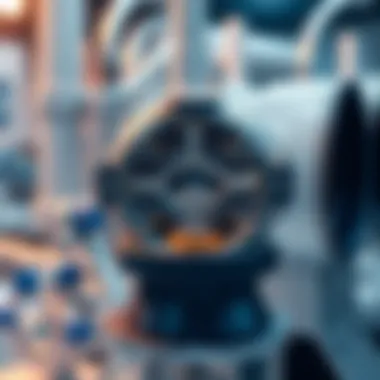
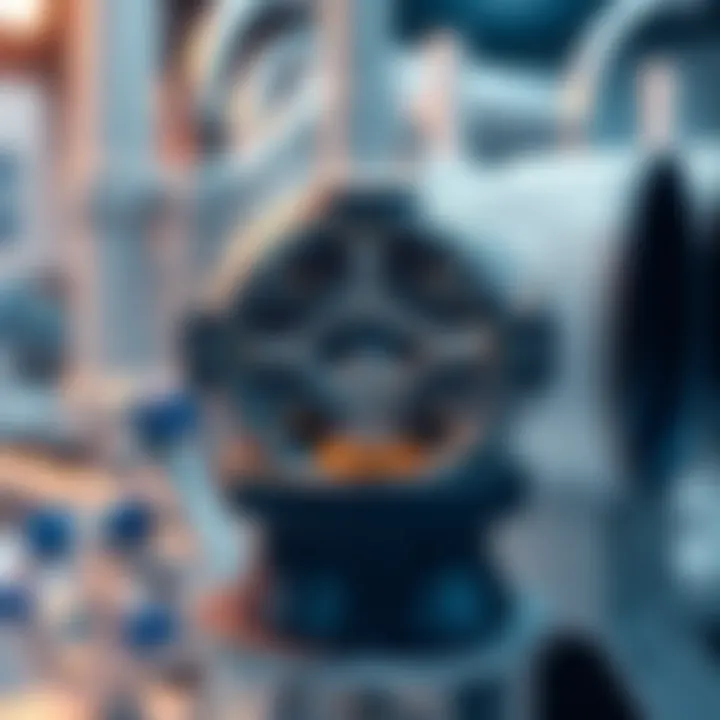
When considering the filtration process in the context of the 100 KDA centrifugal filter, one must think of it as a dance—every component has a role. The filter uses a semi-permeable membrane, which serves to retain larger particles while permitting smaller ones to flow through. To put it plainly, if you have a mixture of molecules, the larger ones are left behind like bouncers at a club while the small ones trickle out.
The setup starts with the preparation of your sample, which is placed in the filter unit. As the centrifugal force is applied, the sample fluid is pushed through the membrane. This creates a gradient that drives the smaller, solvent-soluble molecules downward, while larger proteins or other compounds remain trapped. Essentially, this mechanism allows for efficient separation based on molecular weights, particularly effective at the 100 KDA threshold.
Here are the essential steps in the filtration process:
- Sample Loading: The sample is introduced into the filter unit.
- Centrifugation: The unit is spun, leveraging centrifugal force to push the sample through the membrane.
- Filtrate Collection: The smaller molecules pass through, collected in a designated container.
This method is not just a clever trick; it maximizes purity and yield in sample preparations, which is fundamental in various research and clinical applications.
Role of Centrifugation
Centrifugation is like the powerhouse of this operation; without it, the filtration process would flounder. The centrifugal force facilitates rapid separation of components by forcing them against the membrane. This enables the 100 KDA centrifugal filter to operate efficiently, reducing the time taken to reach results.
Usually, in a typical laboratory setting, centrifugation speeds up the sedimentation of solid particles and the separation of liquid phases. By properly configuring the rotation speed and time, researchers can tailor the conditions for specific sample types. Each sample might require a different approach—what works for a bacterial culture might not work for precious antibodies, for example.
When centrifugation occurs, the larger and heavier molecules move outward while the lighter, quicker ones slide past into the filtrate. It’s a game of hide and seek, where the heavier players remain behind, letting the lighter ones escape. Notably, this process not only enhances separation but also contributes to minimizing damage to the delicate molecules that might otherwise be disrupted.
Material Composition and Design
Material choice and design play vital roles in the effectiveness of the 100 KDA centrifugal filter. This aspect is of paramount importance in ensuring the filter’s functionality, durability, and reliability. Filters are typically made from polyethersulfone or nylon, which provide excellent filtration characteristics while ensuring compatibility with a wide range of sample types.
The design considerations can include:
- Pore Size Distribution: This is crucial in ensuring that only molecules below the specified cut-off size of 100 KDA pass through.
- Membrane Thickness: Thinner membranes may allow for faster filtration but may also lead to quicker fouling, which could impede performance.
- Filter Housing: The structural integrity of the housing is key to withstanding the pressures generated during centrifugation without compromising the filter.
Using high-quality materials and thoughtful design leads to fewer clogging issues, increased throughput, and better molecular retention. Therefore, the synergy between design and material is what really sets the 100 KDA centrifugal filter apart from other filtration methods.
Understanding these mechanisms not only enhances your knowledge but also aids in optimizing the usage of centrifugal filters in practical applications.
Applications of the KDA Centrifugal Filter
The realm of modern scientific research and application is vast, and at the intersection of biochemistry, molecular biology, and industrial processes lies the 100 KDA centrifugal filter. Its application can be a real game changer in today's laboratories and in various industries. Understanding its multifaceted uses not only clarifies its significance but highlights the ingenuity behind its design. Here, we delve into biological research applications, clinical laboratory uses, and industrial applications of this critical filtration technology.
Biological Research Applications
In the world of biological research, the 100 KDA centrifugal filter is as indispensable as the pipette. It serves as a robust tool in isolating proteins, nucleic acids, and other biomolecules. One of its most prominent roles includes concentrating samples or eliminating contaminants from protein solutions. Here's how this plays out:
- Protein Purification: Researchers working with proteins often face challenges in obtaining pure samples free from unwanted substances. Utilizing the 100 KDA filter allows for the effective separation of proteins based on their molecular size, ensuring that only those above 100 KDA are retained while smaller impurities are washed away.
- Nucleic Acid Isolation: In experiments requiring high purity levels, like PCR or sequencing, retaining desired DNA fragments while removing smaller contaminants is crucial. This filter operates effectively, ensuring high recovery rates of biomolecules while maintaining structural integrity.
- Sample Concentration: Especially during preparatory stages, concentrating biological samples enhances detection rates in analyses. Filters can rapidly concentrate samples without significant loss, saving invaluable time and resources in laboratory protocols.
In this context, the application of 100 KDA centrifugal filters becomes vital. Researchers can focus more on experiments rather than troubleshooting contaminations, significantly boosting productivity.
Clinical Laboratory Uses
Clinical laboratories constantly seek efficient ways to purify biological fluids for diagnostic purposes. Here, the 100 KDA centrifugal filter fits perfectly into the puzzle. The ability to separate serum, plasma, or urine allows for a richer analysis of biomarkers. Consider the following key points:
- Serum and Plasma Analysis: By filtering serum samples, laboratories can eliminate low-molecular-weight contaminants and gain clearer insights into disease markers. This is essential when analyzing proteins linked to conditions such as diabetes or cardiovascular diseases.
- Drug Testing and Development: Pharmaceutical companies often utilize these filters to prepare samples for analytical testing. The need for undiluted drug solutions means filtering out larger particles that might interfere with spectroscopic measurements.
- Quality Control: In clinical settings, ensuring sample purity is imperative. The 100 KDA filter not only standardizes sample preparation but also assures that the results remain reproducible, fostering trust in diagnostics.
Thus, in clinical laboratories, the 100 KDA centrifugal filter serves dual purposes: enhancing analytical precision and maintaining diagnostic integrity.
Industrial Applications
Moving into the industrial sphere, the 100 KDA centrifugal filter finds various applications, particularly in fields like biotechnology, food and beverage production, and water treatment. Its adaptability is noteworthy. Here are a few industrial contexts where this filter excels:
- Biotechnology Production: Manufacturers of biopharmaceuticals rely on consistent purification methods to manufacture therapeutic proteins or enzymes. The 100 KDA filter helps streamline this process, effectively retaining larger, active molecules while eliminating undesired low-molecular-weight substances.
- Food and Beverage Industry: In producing high-quality juices or beverages, clarity and stability are of utmost importance. By filtering out larger particulates, producers achieve clearer products without compromising flavor or quality.
- Water Treatment: In processes aimed at purifying water, these filters play a critical role in removing microbial contaminants while allowing beneficial minerals and nutrients to pass through.
The efficiency and versatility of the 100 KDA centrifugal filter highlight its substantial role across various industrial applications, proving it to be not just a tool, but an asset in ensuring safety, quality, and efficacy.
Advantages of Using the KDA Centrifugal Filter
The 100 KDA centrifugal filter offers a plethora of benefits that make it indispensable in various research settings. Understanding these advantages can significantly enhance our approach to purification and separation processes. Several key elements highlight why this filtration method stands out in the crowded field of biotechnology and analytical chemistry.
Efficiency and Speed
Centrifugal filtration, notably the 100 KDA variant, is known for its remarkable efficiency. The design facilitates rapid separation of target molecules from unwanted contaminants. In practical terms, this means that researchers can expect to obtain purified samples in a fraction of the time compared to traditional methods. For instance, a typical session with a 100 KDA filter may yield results in under 30 minutes, whereas conventional filtration can stretch into hours. This swift operation not only accelerates workflows but also minimizes the degradation risk of sensitive biomolecules.
In addition to time savings, one must consider the volume of samples that can be processed simultaneously. High-throughput capabilities enable labs to manage large datasets effectively, making it easier to conduct replicates or multiple experiments in parallel. With a single centrifugation cycle, a significant number of samples can be filtered, thereby optimizing the use of valuable resources.
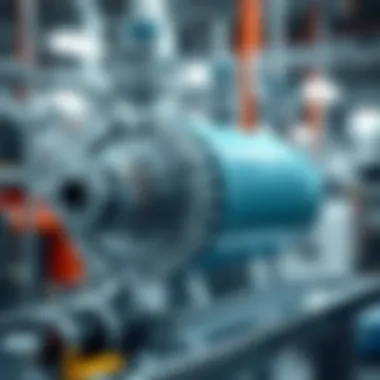
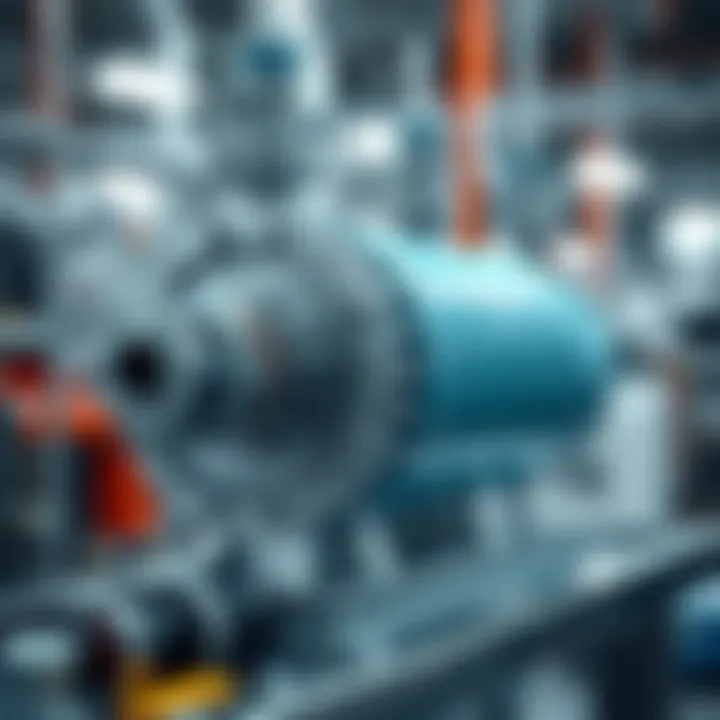
Scalability
Another prominent advantage of the 100 KDA centrifugal filter is its scalability. This technology accommodates a range of sample sizes and quantities, making it flexible for both small-scale experiments and large-scale industrial applications. For example, during laboratory research, scientists may only need to filter milliliters of solution, while industrial processes might demand filtration of liters or even cubic meters.
The versatility in scale ensures that as research or production ramps up, the same reliable filtering technology can maintain its efficacy without requiring a complete overhaul of the setup. This adaptability is essential for research organizations that aim to translate findings from bench-scale experiments into commercial production effectively. In settings where adjustment speed is crucial, having a scalable solution is invaluable.
Retention of Biomolecules
When it comes to biomolecule retention, the 100 KDA centrifugal filter excels at selectively isolating proteins, nucleic acids, and other cellular components based on size. The 100 KDA molecular weight cut-off is specifically designed to retain molecules larger than this threshold while allowing smaller impurities to pass through. As such, it enables researchers to concentrate their target compounds without losing significant quantities of the desired analytes.
Moreover, this precise retention has implications for downstream applications, such as in drug development or protein analysis. Ensuring the majority of biomolecules remain intact means fewer verification steps later in the process.
"With the right filtering technology, the complexities of molecular separation can transform from daunting to manageable."
Through understanding the advantages offered by the 100 KDA centrifugal filter, professionals in various fields can better appreciate its role in advancing scientific endeavors. The efficiency, scalability, and excellent retention capabilities of this technology make it a cornerstone in both research laboratories and industries seeking reliable filtration solutions.
Limitations and Challenges
Understanding the limitations and challenges associated with the 100 KDA centrifugal filter is essential for researchers, scientists, and professionals engaged in filtration processes. While these filters are effective for specific applications, several factors can affect their performance and the quality of the filtration outcome. Awareness of these limitations not only assists in optimizing processes but also guides users in selecting the right filtration method for their needs.
Potential Issues with Fouling
Fouling can be a significant obstacle in the efficacy of centrifugal filters. It occurs when molecules or particulates accumulate on the filter membrane, leading to a decrease in flux and an increase in pressure required for operation. This can turn a smooth filtering process into a rather troublesome affair. A couple of things contribute to fouling: the nature of the sample, whether it’s a protein solution, a cell culture, or any other complex mixture; and the characteristics of the filter membrane itself.
- Sample Composition: High concentrations of particulates or viscous solutions increase the likelihood of fouling. For example, a sample with a high protein concentration may cause proteins to deposit on the membrane, forming a barrier that restricts further flow.
- Filter Membrane Characteristics: The material properties of the filter, such as pore size, surface charge, and hydrophilicity, also play a role. Filters that are not well-matched to the sample's properties will inevitably lead to fouling, thus impacting performance.
Users should consider running preliminary tests to assess compatibility between the filter and the sample. Moreover, incorporating backwashing or cleaning cycles can mitigate fouling, although this may extend processing time.
Limitations in Selectivity
Even though the 100 KDA centrifugal filter is designed to retain molecules above a certain molecular weight, selectivity limitations can arise, especially when it comes to complex mixtures containing a variety of biomolecules. Understanding the implications of this limitation is pivotal for scientists who depend on precise separations to achieve their research objectives.
The degree of selectivity is influenced by several factors:
- Molecular Weight Distribution: If a sample contains a wide range of molecular weights, molecules near the cut-off may pass through inadvertently. This could lead to a less-than-desired yield of the target molecules, compromising the subsequent analysis.
- Affinity Interactions: Certain biomolecules may exhibit affinities that are stronger than the physical constraints of the filter. For instance, some proteins may stick to the filter rather than being effectively separated. This results not only in loss of target biomolecules but also in contamination of the filtrate.
Researchers should take these factors into account, especially when planning experiments that rely heavily on the purity and specificity of collected samples. In some cases, using multiple filtration steps or combining other purification methods may provide the necessary level of selectivity.
"Understanding the challenges of fouling and selectivity in filtration is crucial for optimizing protocols and ensuring research integrity."
In summary, while the 100 KDA centrifugal filter serves a notable role in many applications, being aware of its limitations around fouling and selectivity can significantly enhance the outcomes of filtration processes.
Comparative Analysis with Alternative Filtration Methods
In any scientific endeavor that involves separation and purification of substances, the choice of filtration method can significantly impact the quality and efficiency of results. The 100 KDA centrifugal filter stands out for its unique features, but it is paramount to compare it against other methods like microfiltration and ultrafiltration. Understanding these alternatives not only serves to highlight the strengths of centrifugal filters but also brings attention to conditions and applications where they may or may not be the best fit. This discussion enables researchers and practitioners to make informed decisions tailored to their specific needs.
Microfiltration versus Centrifugal Filters
Microfiltration is often the first line of defense in the filtration hierarchy. Operating at a pore size typically ranging from 0.1 to 10 micrometers, this method efficiently removes larger particles such as bacteria and suspended solids.
On the flip side, centrifugal filters, especially those with a 100 KDA cut-off, focus on smaller molecules, primarily proteins and macromolecules. This distinction is pivotal. For example:
- Microfiltration tends to handle samples with higher viscosity and particulate loads due to its larger pore size, making it suitable for applications like juice clarification or water treatment.
- Centrifugal filters are geared towards applications requiring concentration or purification of specific biomolecules, which are normally smaller in nature.
A key advantage of using centrifugal filters is the fractionation of proteins based on size, while microfiltration is unable to achieve this precision. The centrifugation process applied in centrifugal filtration causes a stratified separation, pulling larger particles down while permitting smaller ones to pass through. Note that the efficiency of such separation directly influences the purity of the retrieved samples.
Ultrafiltration: Advantages and Disadvantages
Ultrafiltration takes the cake when it comes to separating particles in the nanometer range, usually between 1-100 nanometers. Like centrifugal filters, ultrafiltration membranes can also selectively allow specific molecules to pass while retaining larger ones. However, there are both benefits and drawbacks.
Advantages:
- Higher resolution: Ultrafiltration offers tighter control over particle size separation, which can be crucial in purifying proteins or enzymes requiring higher specificity.
- Versatility: This method can be employed across various applications, from pharmaceuticals to bioprocessing.
Disadvantages:
- Fouling: Ultrafiltration membranes are notoriously susceptible to fouling, which can diminish performance over time and necessitate frequent cleaning or replacement.
- Higher operating pressure: Unlike centrifugal filtration, ultrafiltration often demands greater energy investment, leading to higher operational costs.


"The choice of filtration method can influence the outcomes of experiments in profound ways; thus, a comprehensive understanding of available alternatives is invaluable."
By juxtaposing these methods, researchers and practitioners can better tailor their filtration strategies, ensuring that they are equipped to handle their unique challenges effectively.
For more on techniques in filtration, consider visiting Wikipedia or exploring industry insights on ResearchGate.
Case Studies: Practical Applications
Case studies are pivotal in shedding light on the practical applications of the 100 KDA centrifugal filter, illustrating its real-world significance across various fields. They help in understanding not just the theoretical aspects but also the practical efficiency and adaptability of filtration technologies in diverse scenarios. By examining specific contexts in which these filters have been utilized, one can better grasp their functionalities, advantages, and issues that researchers and industry professionals may encounter.
Filtration technology is not a one-size-fits-all solution. Different sectors have unique requirements, and these case studies drive home the point that the 100 KDA filter excels in certain arenas while perhaps facing challenges in others. This section highlights how insights drawn from actual laboratory and industrial applications can inform future advancements and refinements in centrifugal filter technologies.
Laboratory Insights
In academic and research laboratories, the 100 KDA centrifugal filter has become an indispensable tool. It is used in myriad applications from purifying proteins to concentrating nucleic acids. For instance, a research team focused on protein purification faced the hurdle of separating high-molecular-weight contaminants from their target proteins. By employing a 100 KDA centrifugal filter, they were able to achieve a high degree of purity rapidly, significantly reducing the time and resources spent on traditional methods.
Another practical example comes from a biochemistry lab working on gene therapy. The researchers utilized the 100 KDA filters to concentrate plasmid DNA effectively. In doing so, they not only simplified their extraction process but also ensured high yields necessary for future gene editing experiments.
- Key takeaways from laboratory applications include:
- Purity and Yield: Enhanced purity levels of biomolecules facilitate downstream applications, such as crystallography or characterization.
- Time Efficiency: The speed of the centrifugal filtration process saves valuable time compared to conventional purification techniques.
- Flexibility: Adaptability to various sample types, making these filters suitable for diverse research areas.
Industry Success Stories
In the industrial sphere, the impact of the 100 KDA centrifugal filter is equally striking. For example, in the pharmaceutical industry, a company involved in the production of monoclonal antibodies incorporated this filtration method into their purification process. The result was a significant reduction in product loss, which translated directly into cost savings for the organization. This efficiency became a key selling point in competitive bids for lucrative contracts.
Moreover, the biotechnology sector has embraced the 100 KDA centrifugal filter for its versatility. A biotech firm working on enzyme production employed this filter to separate enzymes from fermentation broth effectively. Not only did this streamline their production process, but it also enhanced the enzyme's stability, beneficial for subsequent applications in various manufacturing processes.
- Success factors in industry applications include:
- Cost Efficiency: Lower overall production costs due to higher yields and reduced processing times.
- Regulatory Compliance: Improved ability to meet strict regulatory standards essential for pharmaceutical products.
- Scalability: The application can be easily scaled up for larger production volumes, making it a favorite among companies aiming for growth.
The exploration of these case studies underscores the utility of the 100 KDA centrifugal filter across both laboratory and industrial landscapes. These filters don't just serve a function; they represent a leap toward more efficient, cost-effective processes that enrich our understanding and capabilities in scientific inquiry and industrial production.
Future Perspectives
The realm of centrifugal filtration, particularly with the 100 KDA filter, is on the brink of significant advancements. As scientific exploration continues to expand, the future perspectives on this technology offer a glimpse into its growing utility and application across numerous fields. Addressing these fresh viewpoints not only highlights the evolving nature of filtration solutions but also emphasizes the benefits to be derived from innovations.
Innovation in Filter Technologies
One of the primary areas where we expect to see transformation is in the innovation of filtering technologies. Various studies indicate that improvements in membrane materials, such as the adoption of polyethersulfone or polyamide, could significantly enhance the efficiency of the 100 KDA centrifugal filter. These kind of materials are known for their superior chemical resistance and temperature tolerance, enabling broader applications, from pharmaceutical development to environmental monitoring.
Furthermore, researchers are exploring nanotechnology to create filters that possess enhanced performance metrics. Imagine filters that can selectively target contaminants at a molecular level, optimizing the filtration process while reducing waste. Advanced coatings with antibacterial properties are also being experimented with, ensuring that the integrity of biological samples remains uncompromised during processing. Incorporating smart technologies that monitor filter conditions in real-time could soon be a reality, helping practitioners ensure peak performance while minimizing human error.
Emerging Research Trends
As we move further into the 21st century, emerging research trends signal a collaborative approach to filter applications. Various institutions and organizations are now engaging in cross-disciplinary studies, integrating biochemistry, environmental science, and material engineering. This amalgamation of expertise fosters innovations that could drive the next generation of centrifugal filters.
Notably, there's a growing focus on sustainability. Studies are under way that assess the recyclability of filter components, alongside developments in biodegradable materials. Such advancements not only align with global sustainability goals but also enhance the societal impact of these technologies.
The use of artificial intelligence and machine learning is also gaining traction to predict failures and optimize filtration cycles based on historical data, allowing for more efficient resource allocation.
"The future of the 100 KDA centrifugal filter is not just about separation—it's about creating smarter, more efficient systems that resonate across multiple scientific domains."
Whether in healthcare, environmental science, or industrial applications, it's clear that the future beckons for innovative methodologies and intelligent solutions. Ensuring adaptability and scaling these technologies to meet diverse needs will ultimately elevate the role of the 100 KDA centrifugal filter within the wider scientific community, paving the way for breakthroughs we have yet to imagine.
Culmination and Summary
In this section, we circle back to the principale insights derived from our exploration of the 100 KDA centrifugal filter. The importance of understanding both its utility and mechanism cannot be understated, especially in the context of modern scientific and industrial applications. These filters exemplify a blend of engineering and biochemistry, serving as a vital tool for sample preparation, purification, and concentration of biomolecules.
This filter’s ability to efficiently separate particles by molecular weight stands as a unique selling point, giving it an edge in various disciplines. Notably, the 100 KDA mark indicates a balance between retaining essential biomolecules while allowing smaller unwanted contaminants to pass through, making it indispensable for researchers working with proteins and nucleic acids.
Moreover, the advantages highlighted throughout the article — such as speed, scalability, and efficiency — affirm the filter's role in laboratories and clinical settings alike. Understanding the limitations, too, is crucial. While fouling and selectivity issues may arise, knowing these challenges equips users to mitigate them effectively.
"Knowledge is power, but only when applied wisely."
Recap of Key Points
- Utility: The 100 KDA centrifugal filter is vital for sample preparation across many scientific fields.
- Mechanism: Its design allows for effective separation based on molecular weight, particularly benefiting biomolecular studies.
- Advantages: Key benefits include efficiency, speed, and the ability to scale applications, addressing various needs, from research labs to clinical practices.
- Limitations: Awareness of potential fouling and selectivity challenges helps in navigating practical implementation.
Final Thoughts on KDA Filters
In closing, the 100 KDA centrifugal filter represents a significant advancement in filtration technology. A deep understanding of its mechanism and applications is not only advantageous for researchers but essential for pushing the boundaries of what's possible in biochemistry and molecular biology.
As the landscape of scientific research continues to evolve, these filters will undoubtedly remain a cornerstone in the methodologies employed, paving the way for innovative breakthroughs and discoveries. Exploring further advancements in filter technology will be worth watching, ensuring that the field continues to benefit from improved efficacy and performance. For ongoing developments, resources like Wikipedia and professional forums like Reddit can provide updated insights.



